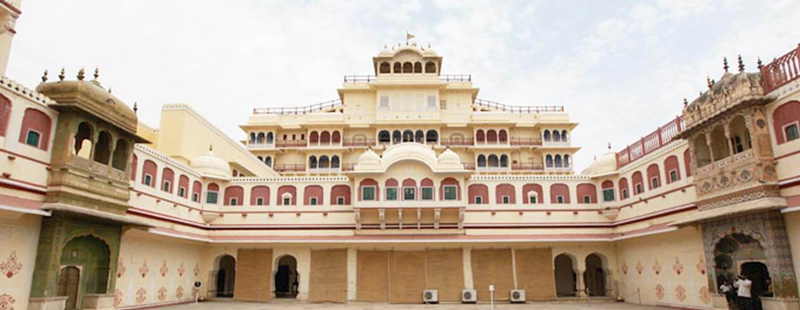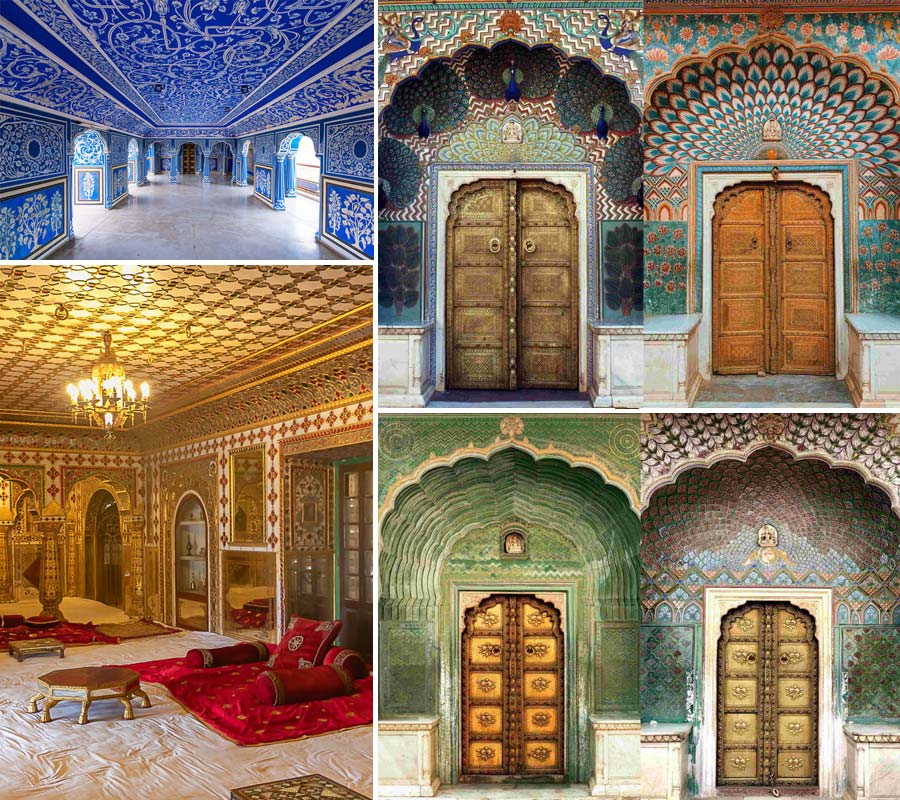City Palace Jaipur: A Jewel of Rajasthan's Heritage
Introduction
City Palace Jaipur stands as a testament to the grandeur and architectural finesse of Rajasthan's royal legacy. Built in the early 18th century by Maharaja Sawai Jai Singh II, this magnificent palace complex in the heart of Jaipur continues to enchant visitors with its blend of Rajput, Mughal, and European influences. Let's delve deeper into the rich history, architectural marvels, and practical details that make City Palace Jaipur a must-visit destination.
History of City Palace Jaipur
City Palace Jaipur was established as the seat of the Maharaja of Jaipur, where administrative affairs were conducted and royal ceremonies took place. Over the centuries, successive rulers made significant additions to the palace complex, enriching its architectural diversity and cultural significance. The palace's construction and design reflect the cultural amalgamation and artistic patronage of the Mughal and Rajput rulers, showcasing Rajasthan's rich heritage.
Architecture and Design
Layout and Structure
The City Palace complex spans several courtyards, gardens, and palaces, each offering a unique glimpse into the opulent lifestyle of the Maharajas. The architectural style varies from the intricate marble carvings of the Mubarak Mahal to the elaborate frescoes of the Chandra Mahal. The palace's design integrates strategic elements for defense, intricate detailing in stone and marble, and harmonious proportions that exemplify Jaipur's urban planning principles.
Key Structures
- Chandra Mahal: This seven-story palace is the residence of the current royal family. Each floor, with its distinct name and purpose, offers insights into the royal lifestyle and traditions.
- Mubarak Mahal: Initially built as a reception hall, it now houses the Maharaja Sawai Man Singh II Museum, displaying a rich collection of royal costumes, textiles, arms, and artifacts.
- Diwan-i-Khas and Diwan-i-Aam: These halls were used for official functions and meetings. Diwan-i-Khas, or the Hall of Private Audience, is adorned with intricate floral motifs and houses a stunning collection of weapons and armor.
- Pritam Niwas Chowk: This courtyard features four beautifully adorned doorways representing the seasons, with the Peacock Gate dedicated to Lord Vishnu.
Exploring City Palace Jaipur
Highlights and Must-See Attractions
- Peacock Gate: Admire the intricate artwork depicting peacocks, symbolizing grace and beauty, at the entrance to the Chandra Mahal.
- Art and Architecture: Marvel at the delicate mirror work, frescoes, and painted doorways that adorn the various palaces and halls within the complex.
- Sukh Niwas and Shobha Niwas: Experience the tranquility of the Hall of Rest and the beauty of the Hall of Beauty, showcasing traditional Rajasthani motifs and artwork.
Practical Information for Visitors
Visiting Hours
City Palace Jaipur is open daily from 9:30 AM to 5:00 PM, allowing ample time to explore its intricate details and historical significance.
Entry Fees
- INR 300 for Indian nationals
- INR 1,000 for foreign tourists
Additional charges may apply for guided tours or access to specific sections of the palace complex.
Best Time to Visit
To avoid crowds and the heat, visit early in the morning or during the cooler months from October to March. This period offers pleasant weather for exploring the outdoor spaces and gardens within the palace complex.
How to Reach City Palace Jaipur
- By Air: Jaipur International Airport is approximately 13 kilometers from the City Palace. Taxis and private cabs are readily available for a convenient journey.
- By Train: Jaipur Junction Railway Station is well-connected to major cities across India. From the station, taxis and auto rickshaws provide easy access to the palace complex.
- By Road: Jaipur is accessible via national highways and state roads. Local buses, taxis, and private cars offer convenient transportation options to reach City Palace, located near Tripolia Bazaar.
Tips for Visitors
- Guided Tours: Enhance your experience with a guided tour to gain deeper insights into the palace's history, architecture, and cultural significance.
- Photography: Capture the beauty of City Palace Jaipur but respect photography guidelines, especially in sensitive or private areas.
- Local Etiquette: Dress modestly and respectfully when visiting religious or ceremonial spaces within the palace complex, adhering to local customs and traditions.
Conclusion
City Palace Jaipur stands as a beacon of Rajasthan's royal heritage, captivating visitors with its architectural splendor, historical significance, and cultural richness. Whether you're exploring the ornate interiors of Chandra Mahal or strolling through the serene courtyards of Pritam Niwas Chowk, every corner of the palace complex offers a glimpse into the regal past of Jaipur's Maharajas.
Plan your visit to City Palace Jaipur and embark on a journey through Rajasthan's royal legacy, where history comes alive amidst architectural marvels and timeless elegance. Experience the charm and allure of one of India's most iconic palaces, ensuring an unforgettable adventure in the Pink City.

